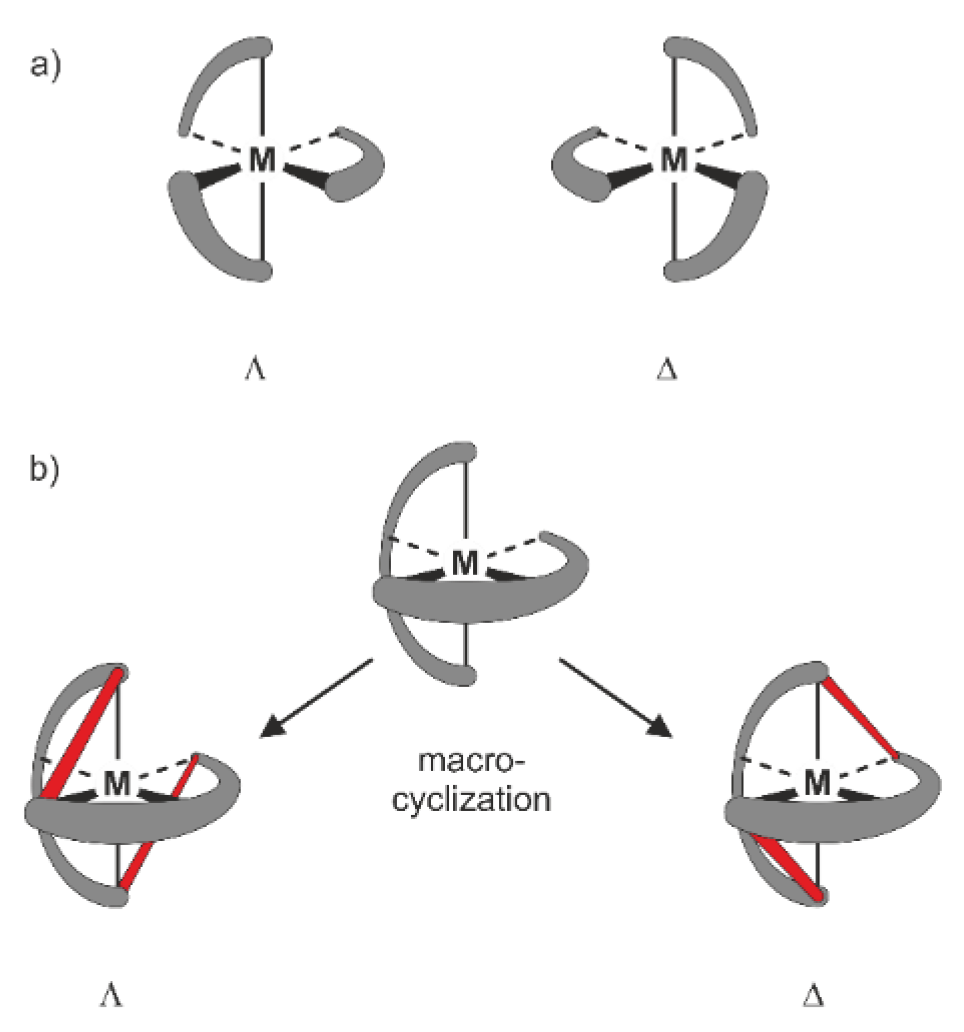Chiral Macrocyclic Terpyridine Complexes
Since the pioneering work of Louis Pasteur [1], chirality is a physical chemical property in the center of interest of chemical structures and transformations. Besides chirality induced by stereogenic centers, axial chirality emerges from the helical arrangement of the molecule’s subunits [2]. A prominent school book example for a helical chiral metal complex are tris(2,2’-bipyridine)-M(II) derivatives. The three ligands wrap around the central metal in a helical arrangement, resulting in a spatial arrangement which resembles a ship’s screw. The two enantiomers are distinguished by the helicity of the arrangement between the left-handed (L) and right-handed (D) isomer (Figure 1a) [3]. Going from 2,2’-bipyridine to 2,2':6',2''-terpyridine an additional binding site is introduced. The two ligands are arranged perpendicular to each other and the helical chirality is lost. Two terpyridines facing each other in the periphery of macrocycles complemented by additional coordination sites resulted in chiral metal complexes. Prominent examples were only reported as racemic mixture [4,5]. Here we present our new strategy to introduce axial chirality into metal terpyrdine complexes, namely by twofold interlinking of the ligands surrounding the metal ion. The concept is sketched in figure 1b) and can also be described as template supported macrocyclization reaction. The two terpyridine close a macrocycle which has been preorganized (templated) by the formation of the metal-terpyridine complex. The terpyridines are complemented by two ortho-ethynylphenyl moieties in 4 and 4’’ positions allowing for macrocyclization by Glaser-Hay type oxidative acetylene coupling chemistry.

Figure 1: Sketch of axial chirality in metal complexes: a) axial chirality with bidental ligands (e.g. 2,2’-bipyridine). b) Concept of introducing chirality by macrocyclization. Top: Achiral complex of a tridental ligand (e.g. 2,2':6',2''-terpyridine). Bottom: Axial chiral metal complexes obtained by interlinking the ends of the two tridental ligands (interlinking bridges in red).
[1] L. Pasteur, C R Acad Sci Paris, 1848, 26, 535–538.
[2] R. S. Cahn, C. Ingold, V. Prelog, Angew. Chem. Int. Ed. Engl., 1966, 5, 385–415.
[3] N. C. Fletcher, J. Chem. Soc., Perkin Trans. 1 2002, 1831–1842.
[4] F. Niess, V. Duplan, C. S. Diercks, J.-P. Sauvage, Chem. – Eur. J., 2015, 21, 14393–14400.
[5] C. Bazzicalupi, A. Bianchi, T. Biver, C. Giorgi, S. Santarelli, M. Savastano, Inorg. Chem., 2014, 53, 12215–12224.